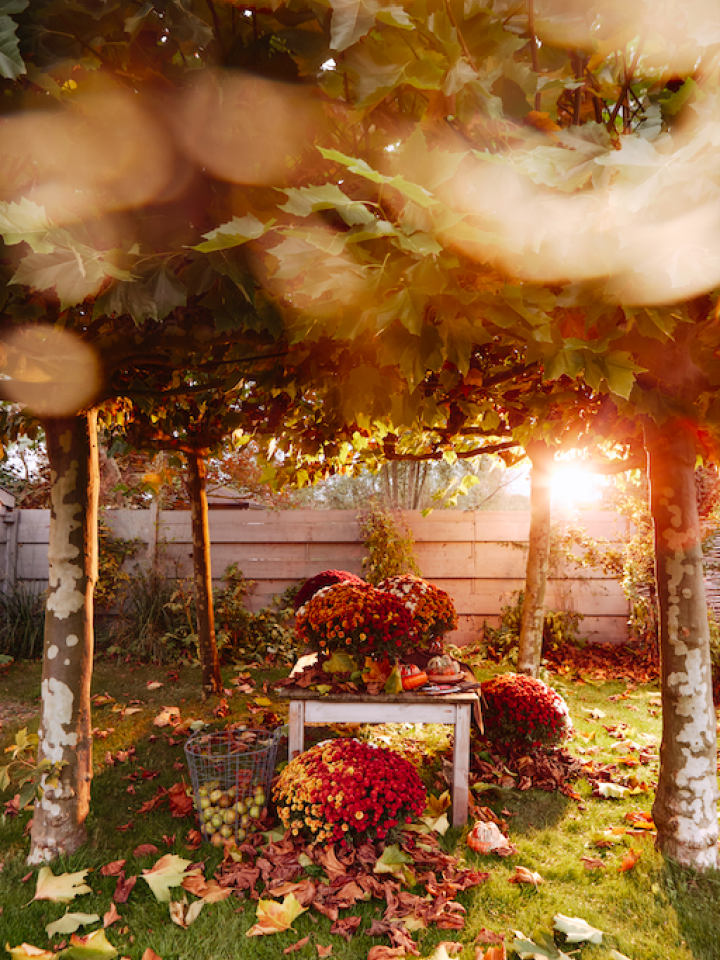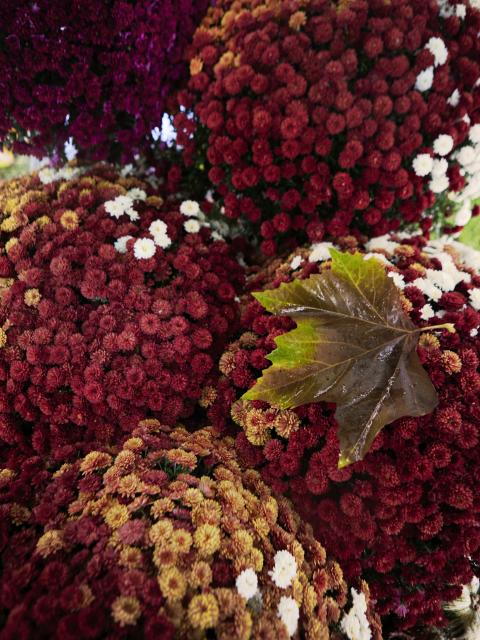1. To prune or not to prune?
Autumn is an important period when it comes to pruning, but be careful as pruning methods can vary greatly from plant to plant. Some plants can be cut back to just above the ground in autumn. Other plants can be left all winter and only need to be pruned in spring. There are also plants which only require a small trim. Check the pruning guidelines for the plants in your garden by looking at our plant guides for advice (see ‘plant guide’ on the menu on this page).
2. Protect or overwinter frost-sensitive plants
Some plants aren't bothered by the cold, while others are quick to give up the ghost as soon as the temperature starts dropping. Should you leave your plants where they are, or should you take steps to ensure they survive the winter? Check out our recommendations in this article to ensure your plants make it through the colder months.

3. Remove annual plants
Annual plants will have finished flowering by now, so you can remove them and throw them away. Fill any bare patches with plants such as chrysanthemums, violas, Osmanthus or winter heather, so your garden will still have colour and life over winter. Check out this article on winter flowers for more planting inspiration.
4. Plant new garden plants
It's often a better idea to plant new plants in autumn rather than the next spring. The soil still has retained summertime warmth at this time of year and you don't have to worry about drought in autumn. Plants will have a head start as they will have had a season to establish themselves before the growing season starts in the spring. There are exceptions to this rule, however, so be sure to check here before you start digging.
5. Protect outside taps, watering cans and pots from frost
Remove the garden hose from the outdoor tap and shut it off securely - you don’t want it to freeze and be damaged by expanding ice. Zinc watering cans can also be damaged by ice, so tidy them away or place them upside down so that no water can get in. Wicker baskets, zinc containers and pots made of anything from terracotta to plastic will all be improved by a good clean before being stored for the season. If they’re wintering outdoors, store them upside down as if water is left in earthenware or pots, they can crack if there’s a frost. Painted and glazed earthenware is best stored in the shed.

6. Recycle leaves for natural insulation
Don’t stick fallen leaves in your garden waste bin just yet. Rake the leaves off your lawn straight into your garden borders, where they'll provide a natural layer of insulation against frost, as well as helping to prevent weeds and being beneficial to animals, worms, insects and birds.
7. Mow your lawn one last time
Mow your lawn one last time before winter sets in. Usually this is around October, but the exact time will vary year on year. Give the lawn a final cut as soon as the ground temperature drops below 8°C to 5°C on a regular basis. At this temperature, grass stops growing and mowing is no longer necessary. Note that a lawn that gets a lot of sun can be mown shorter than a shaded lawn. Treat your lawn to some garden lime for a fresh green colour come springtime.
8. Make your garden animal-friendly
Birds and other creatures could always use some love and attention in the autumn and winter. Our article on how to make your autumn garden wildlife-friendly offers some smart tips on how to encourage visitors into or out of your garden.

9. Clean garden tools and furniture
Check whether secateurs, hedge clippers and lawnmower blades need sharpening. The sharper the equipment, the less damage it causes to plants. Once sharp, clean garden tools and leave them to dry thoroughly before storing them away. Any tools with wooden handles or parts will benefit if you rub them with oil, sand off any patches of rust and grease any metal parts.
Empty the garden hose and leave all the fittings to soak in diluted vinegar overnight. Leave to dry thoroughly before storing. Give garden furniture a wipe down to remove dust and dirt and store under covers or in a shed or garage to prevent damage during rain, frosts and snow.
10. Make compost
Making leaf-based compost is easier than building a traditional compost heap. All you need is a couple of plastic bin bags and somewhere to place them out of sight. Rake up leaves after a rain shower, as they need to be damp. Place as many as possible in a bin bag, scatter some chalk (or compost accelerator, or finely ground eggshells) between the layers, and press down firmly. Leave the contents in a chicken wire basket and wind and weather will do the rest. After a year you will have a wonderfully nutritious, mulchy soil cover that you’ve made yourself. If you’re even more patient, it will turn into potting soil.
More autumnal inspiration
Looking for more seasonal inspiration? Discover these 9 classic autumn plants in warm, rich colours or get inspired by 3 beautiful plant combinations with an autumnal colour palette.














